Experimental Study on Distribution of Landslide Thrust in Pile-Anchor Structure based on Photoelastic Technique
Abstract
:1. Introduction
2. Methodology
2.1. The Prototype Landslide and the Law of Similitude
2.2. Model Preparation and Installation
2.3. Loading Scheme
2.4. Measuring Scheme
2.4.1. Anchor Tension Sensor
2.4.2. Photoelastic Survey System
3. Results and Discussion
3.1. Isochromatic Fringe Phenomena and Anchor Tension
3.2. Landslide Thrust Share in the Pile-Anchor Support System
3.3. Load Sharing Ratio of Anchor
3.4. Effect of Increased Landslide Thrust
3.5. Effect of Pile Material
3.6. Influence of Anchor on the Internal Force Distribution of Pile
4. Conclusions
Author Contributions
Funding
Conflicts of Interest
References
- Xu, R.; Li, X.; Yang, W.; Rabiei, M.; Yan, C.; Xue, S. Field measurement and research on environmental vibration due to subway systems: A case study in eastern China. Sustainability 2019, 11, 6835. [Google Scholar] [CrossRef] [Green Version]
- Xu, R.; Li, X.; Yang, W.; Jiang, C.; Rabiei, M. Use of local plants for ecological restoration and slope stability: A possible application in Yan’an, Loess Plateau, China. Geomat. Nat. Hazards Risk 2019, 10, 2106–2128. [Google Scholar] [CrossRef]
- Zhao, B.; Wang, Y.S.; Wang, Y.; Shen, T.; Zhai, Y.C. Retaining mechanism and structural characteristics of h type anti-slide pile (hTP pile) and experience with its engineering application. Eng. Geol. 2017, 222, 29–37. [Google Scholar]
- Tang, H.; Wasowski, J.; Juang, C.H. Geohazards in the three gorges reservoir area, China—Lessons learned from decades of research. Eng. Geol. 2019, 261, 105267. [Google Scholar] [CrossRef]
- Bednarczyk, Z. Evaluating landslide remediation methods used in the Carpathian Mountains, Poland. Environ. Eng. Geosci. 2019, 25, 272–288. [Google Scholar] [CrossRef]
- Liu, X.R.; Kou, M.M.; Feng, H.; Zhou, Y. Experimental and numerical studies on the deformation response and retaining mechanism of h-type anti-sliding piles in clay landslide. Environ. Earth Sci. 2018, 77, 163. [Google Scholar] [CrossRef]
- Usluogullari, O.F.; Temugan, A.; Duman, E.S. Comparison of slope stabilization methods by three-dimensional finite element analysis. Nat. Hazards 2016, 81, 1027–1050. [Google Scholar] [CrossRef]
- Ito, T.; Matsui, T.; Pyo, H.; Wong, W.P. Design method for stabilizing piles against landslide: One row of piles. Soils Found. 1981, 21, 21–37. [Google Scholar] [CrossRef] [Green Version]
- Hassiotis, S.; Chameau, J.L.; Gunaratne, M. Design method for stabilization of slopes with piles. J. Geotech. Geoenviron. 1997, 123, 314–322. [Google Scholar] [CrossRef]
- Ito, T.; Matsui, T. Methods to estimate lateral force acting on stabilizing piles. Soils Found. 1975, 15, 43–59. [Google Scholar] [CrossRef] [Green Version]
- Chen, C.; Xia, Y.; Li, C.; Ni, Q. Experimental Investigations of end bearing anchors under uplift load using transparent soil and numerical simulation. Arab. J. Sci. Eng. 2019. [Google Scholar] [CrossRef]
- Wang, P.Y.; Peng, Y.Q.; Liu, Y.X. Distribution of landslide thrust on anti-slide pile ascertained by specified shear opening method. J. Logist. Eng. Univ. 2010, 26, 1–4. [Google Scholar]
- Touliatou, D.; Marcus, A. Wheel, experimental and numerical analysis of size effects on stress intensity in anisotropic porous materials. Eng. Fail. Anal. 2019, 104, 772–783. [Google Scholar] [CrossRef]
- Zakeri, M.; Ayatollahi, M.R.; Nikoobin, A. Photoelastic study of a center-cracked plate—The lateral load effects. Comput. Mater. Sci. 2007, 41, 168–176. [Google Scholar] [CrossRef]
- Hao, W.; Zhu, J.; Zhu, Q.; Yuan, Y. Photoelastic analysis of matrix crack-tilted fiber bundle interaction. Polym. Test. 2016, 51, 101–108. [Google Scholar] [CrossRef]
- Gei, M.; Misseroni, D. Experimental investigation of progressive instability and collapse of no-tension brickwork pillars. Int. J. Solids Struct. 2018, 155, 81–88. [Google Scholar] [CrossRef] [Green Version]
- Ju, Y.; Wang, L.; Xie, H.; Ma, G.; Zheng, Z.; Mao, L. Visualization and transparentization of the structure and stress field of aggregated geomaterials through 3D printing and photoelastic techniques. Rock Mech. Rock Eng. 2017, 50, 1383–1407. [Google Scholar] [CrossRef]
- Zheng, H.; Wang, D.; Behringer, R.P. Experimental study on granular biaxial test based on photoelastic technique. Eng. Geol. 2019, 260, 1–5. [Google Scholar] [CrossRef]
- Howell, D.; Behringer, R.P.; Veje, C. Stress fluctuations in a 2D granular Couette experiment: A continuous transition. Phys. Rev. Lett. 1999, 82, 5241–5244. [Google Scholar] [CrossRef] [Green Version]
- Majmudar, T.S.; Behringer, R.P. Contact force measurements and stress-induced anisotropy in granular materials. Nature 2005, 435, 1079–1082. [Google Scholar] [CrossRef] [PubMed]
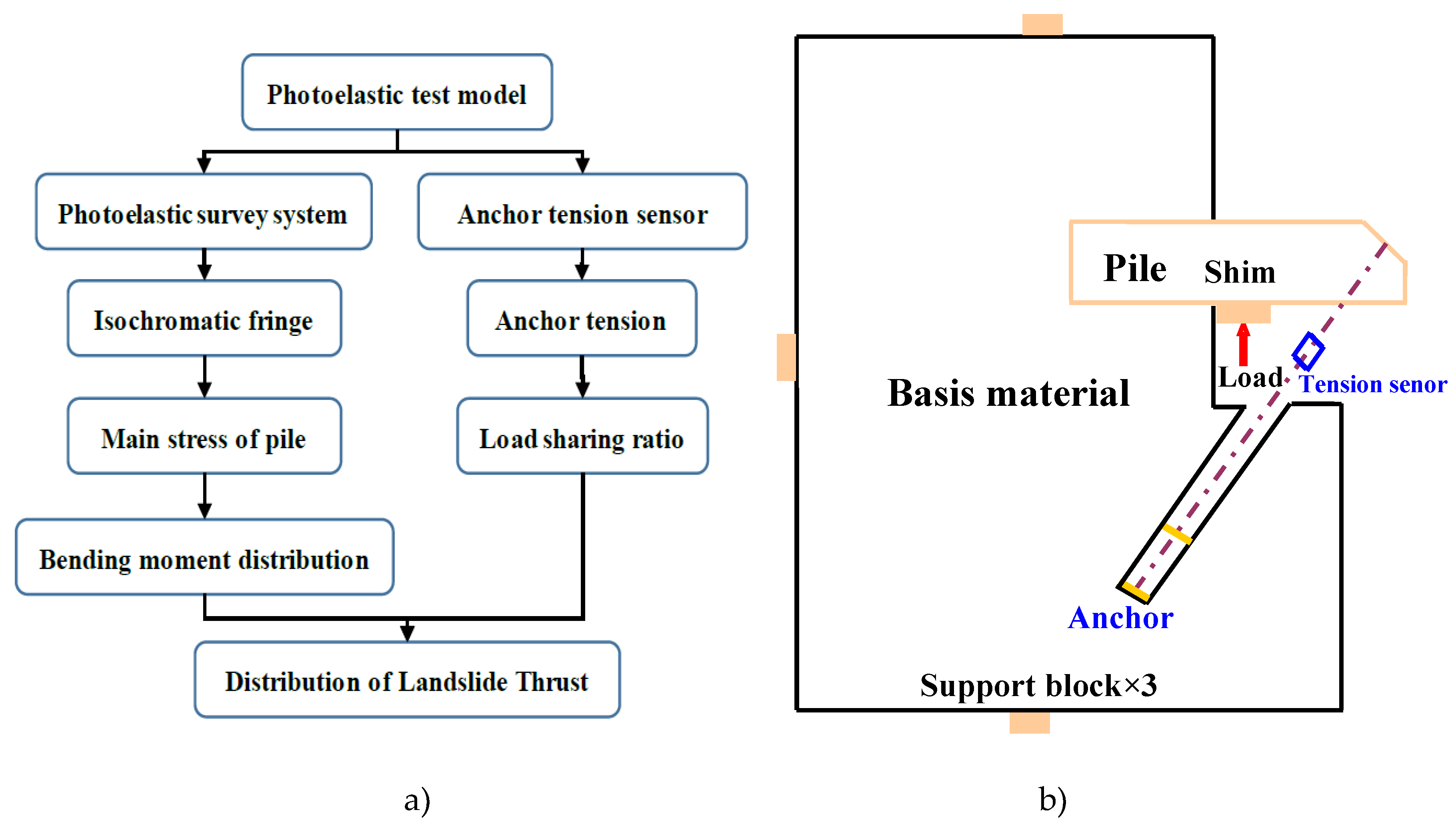
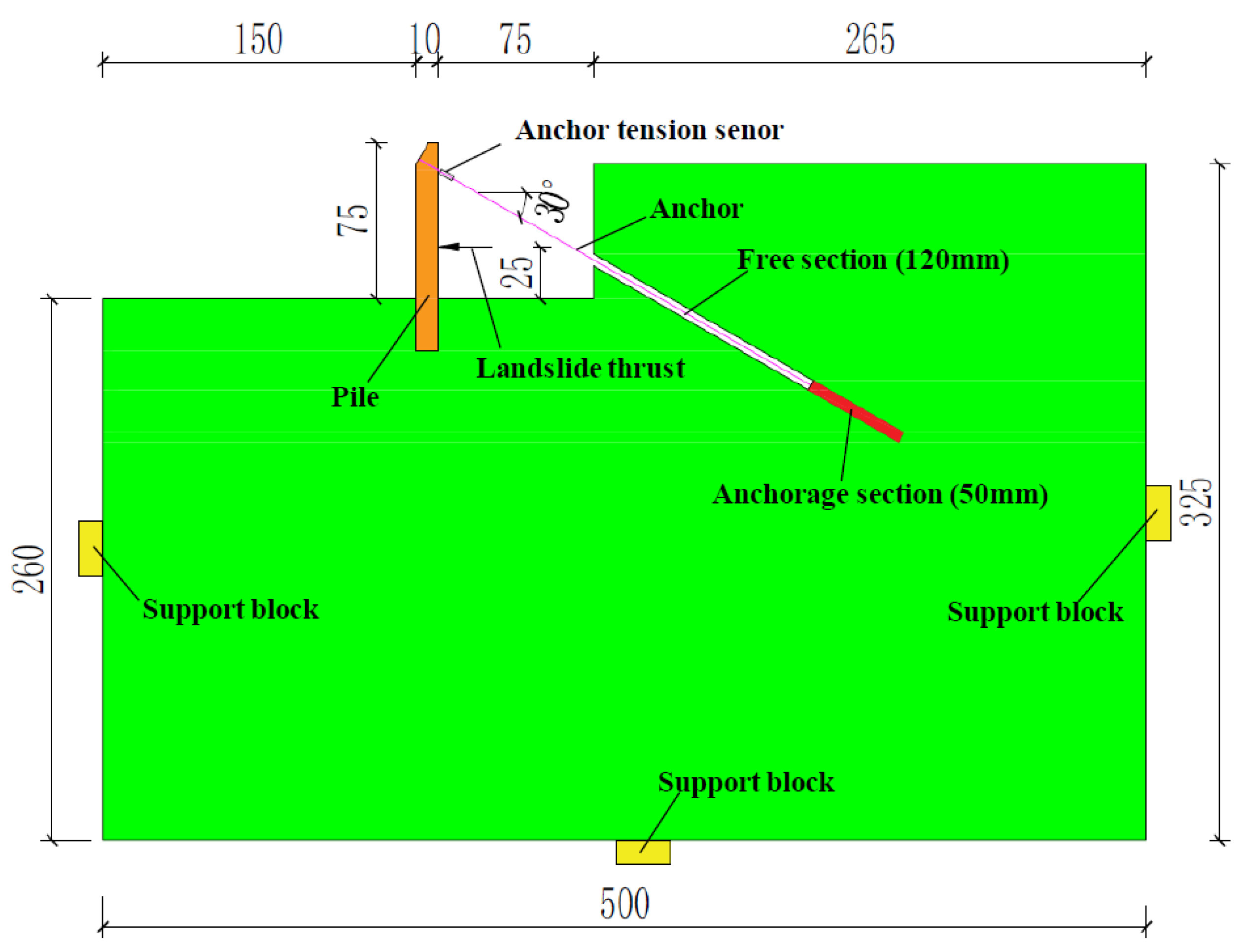

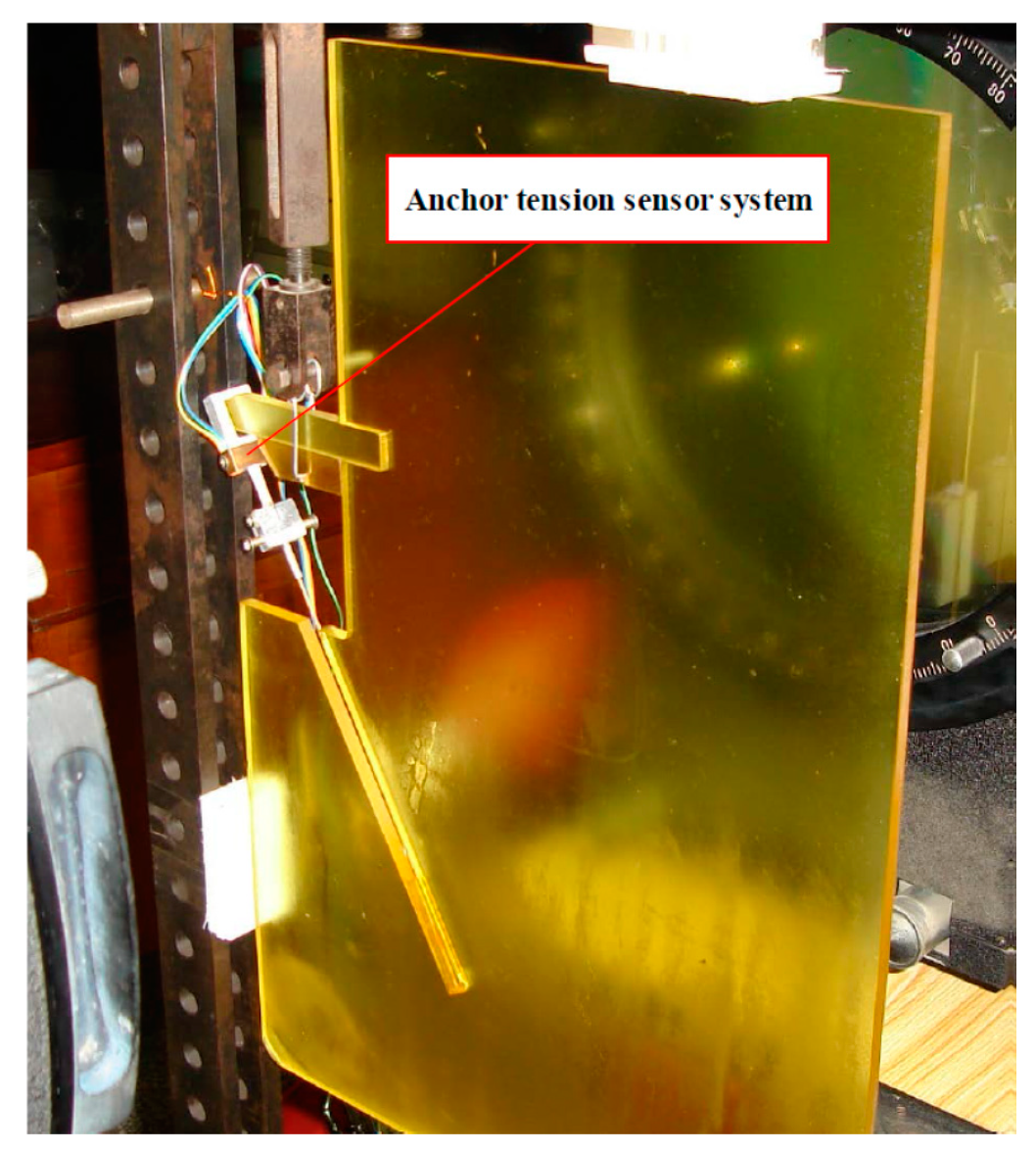
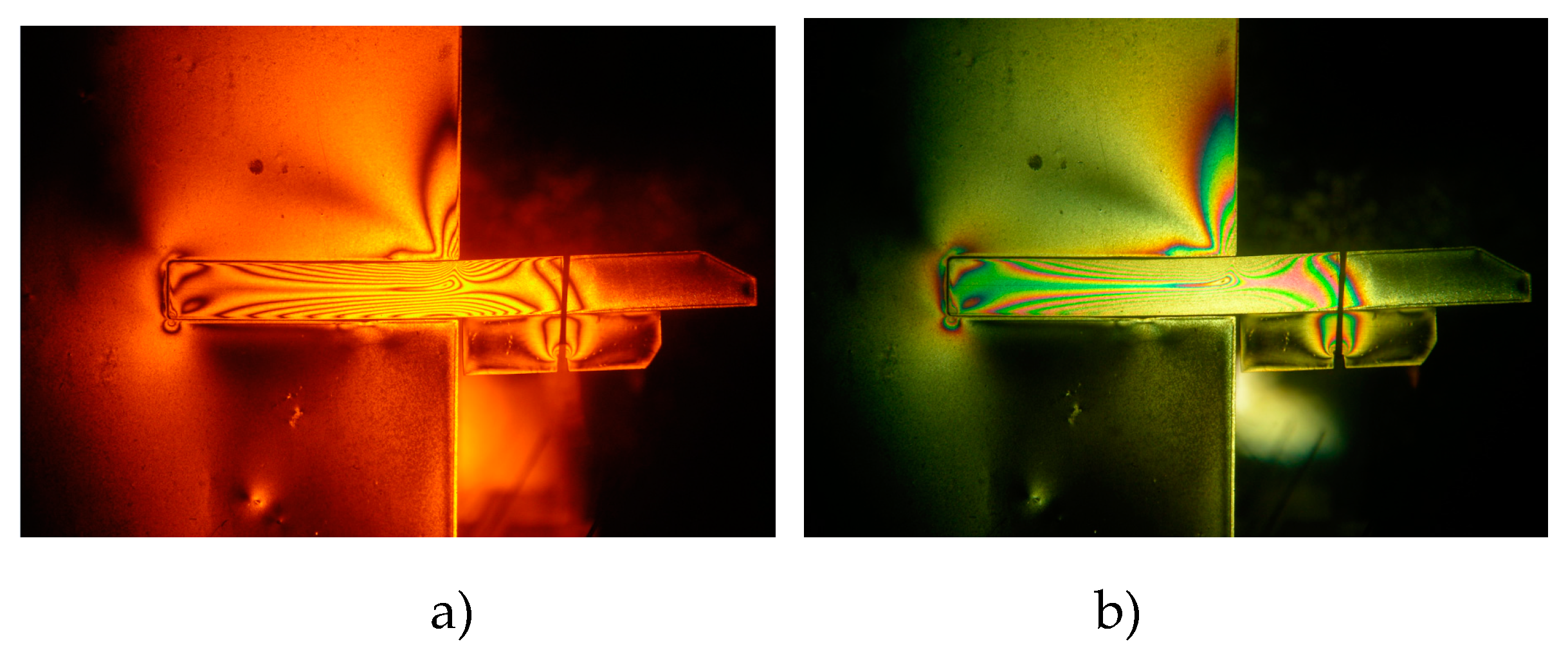
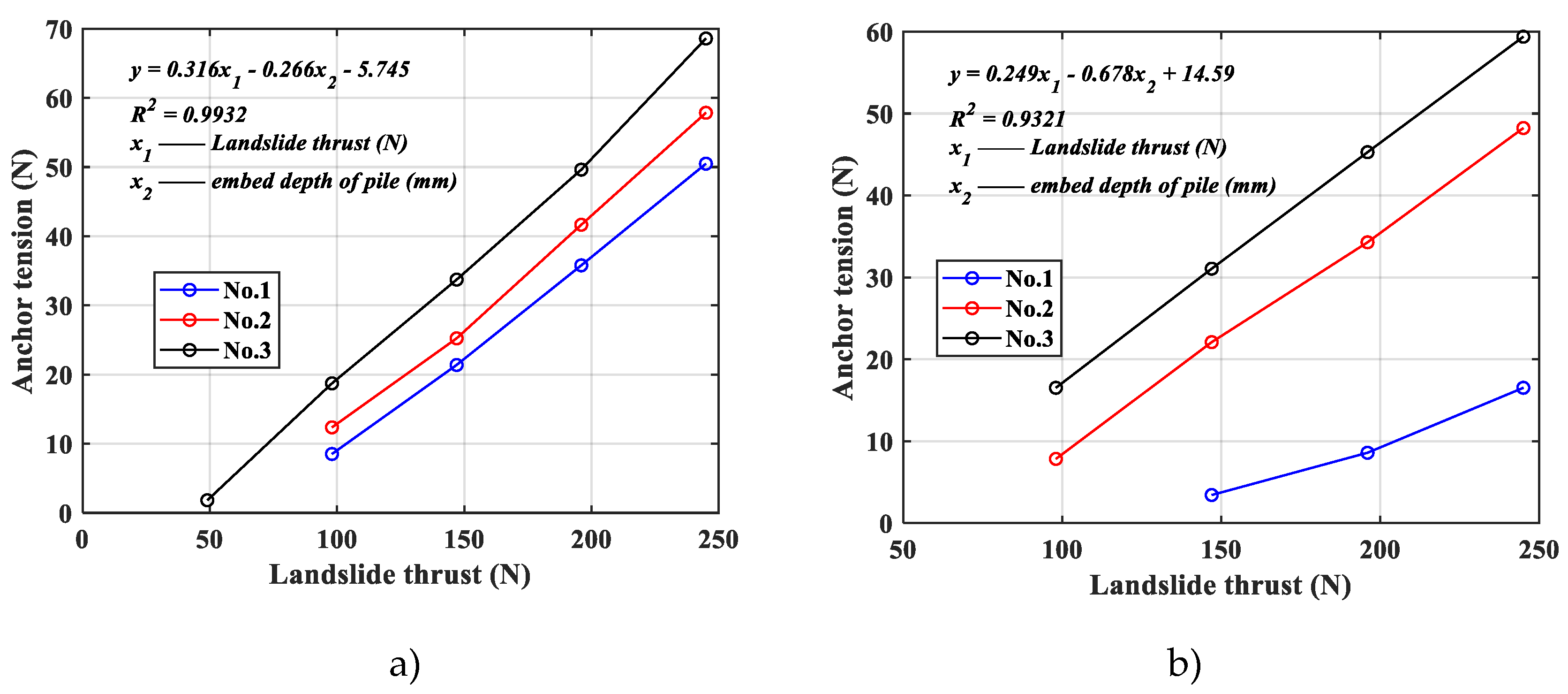

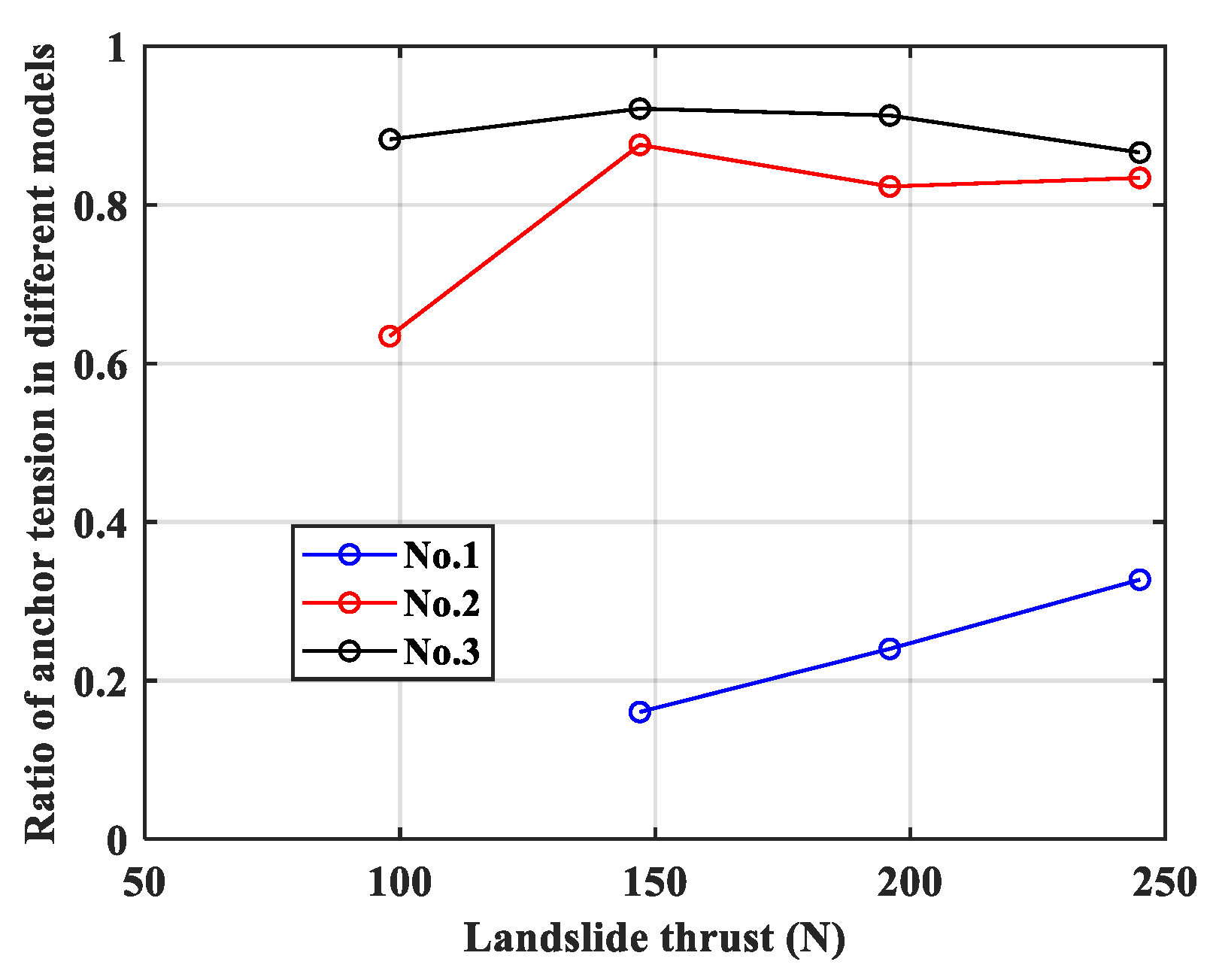
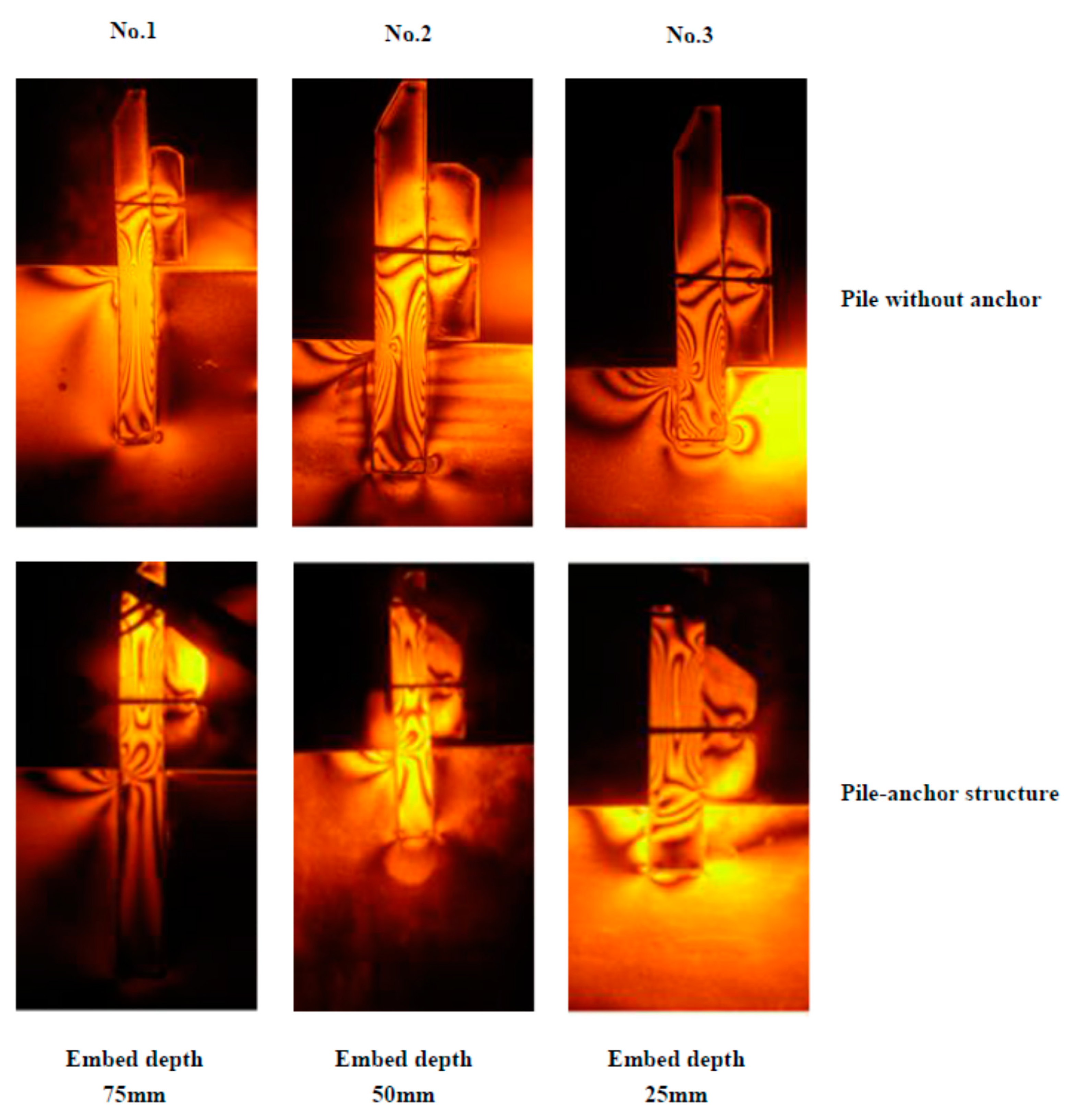

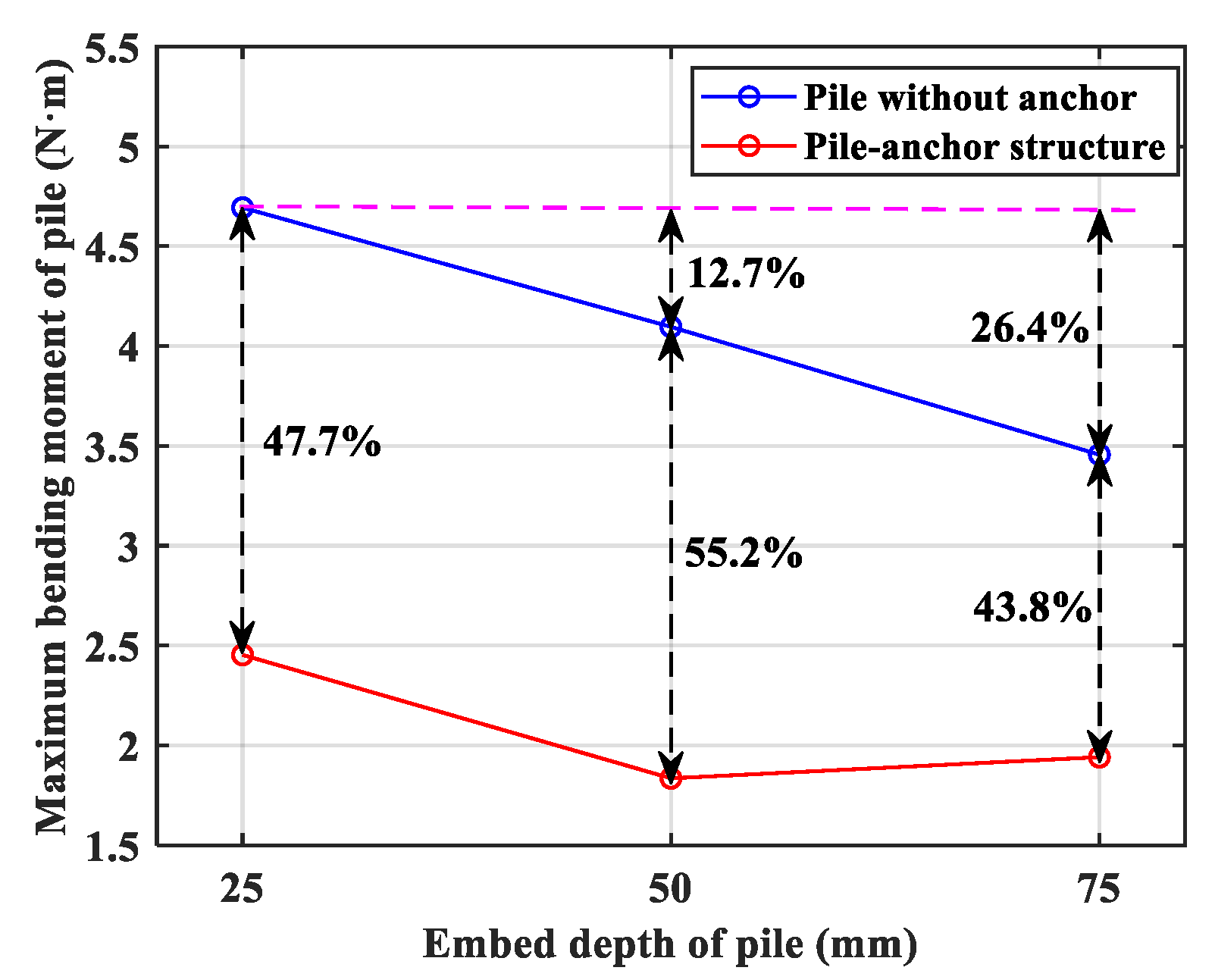

| No. | Pile Length | Embed Part of Pile | Cantilever Part of Pile |
|---|---|---|---|
| 1 | 150 | 75 | 75 |
| 2 | 125 | 50 | 75 |
| 3 | 100 | 25 | 75 |
| Landslide Thrust | No.1 Epoxy Resin Pile | No.2 Epoxy Resin Pile | No.3 Epoxy Resin Pile | |||
|---|---|---|---|---|---|---|
| Anchor Tension | Ratio of Loading Share | Anchor Tension | Ratio of Loading Share | Anchor Tension | Ratio of Loading Share | |
| 49 | / | / | / | / | 1.82 | 3.7% |
| 98 | 8.51 | 8.7% | 12.36 | 12.6% | 18.72 | 19.1% |
| 147 | 21.38 | 14.5% | 25.23 | 17.1% | 33.72 | 22.9% |
| 196 | 35.78 | 18.2% | 41.65 | 21.3% | 49.62 | 25.3% |
| 245 | 50.48 | 20.6% | 57.84 | 23.6% | 68.58 | 28.0% |
| Landslide Thrust | No.1 Aluminum Alloy Pile | No.2 Aluminum Alloy Pile | No.3 Aluminum Alloy Pile | |||
|---|---|---|---|---|---|---|
| Anchor Tension | Ratio of Loading Share | Anchor Tension | Ratio of Loading Share | Anchor Tension | Ratio of Loading Share | |
| 49 | / | / | / | / | / | / |
| 98 | / | / | 7.84 | 8% | 16.52 | 16.86% |
| 147 | 3.43 | 2.33% | 22.09 | 15% | 31.06 | 21.13% |
| 196 | 8.59 | 4.38% | 34.28 | 17.49% | 45.28 | 23.1% |
| 245 | 16.52 | 6.74% | 48.23 | 19.68% | 59.38 | 24.2% |
© 2020 by the authors. Licensee MDPI, Basel, Switzerland. This article is an open access article distributed under the terms and conditions of the Creative Commons Attribution (CC BY) license (http://creativecommons.org/licenses/by/4.0/).
Share and Cite
Li, X.; Xu, R.; Yang, W.; Li, P.; Yang, K.; Zhang, W. Experimental Study on Distribution of Landslide Thrust in Pile-Anchor Structure based on Photoelastic Technique. Materials 2020, 13, 1358. https://doi.org/10.3390/ma13061358
Li X, Xu R, Yang W, Li P, Yang K, Zhang W. Experimental Study on Distribution of Landslide Thrust in Pile-Anchor Structure based on Photoelastic Technique. Materials. 2020; 13(6):1358. https://doi.org/10.3390/ma13061358
Chicago/Turabian StyleLi, Xunchang, Rui Xu, Wei Yang, Pingan Li, Ke Yang, and Wenyong Zhang. 2020. "Experimental Study on Distribution of Landslide Thrust in Pile-Anchor Structure based on Photoelastic Technique" Materials 13, no. 6: 1358. https://doi.org/10.3390/ma13061358






